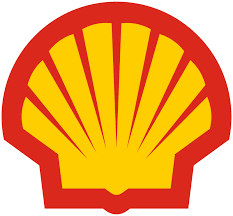Gas
NLNG Enters a Gas Supply Deal with Seplat Energy
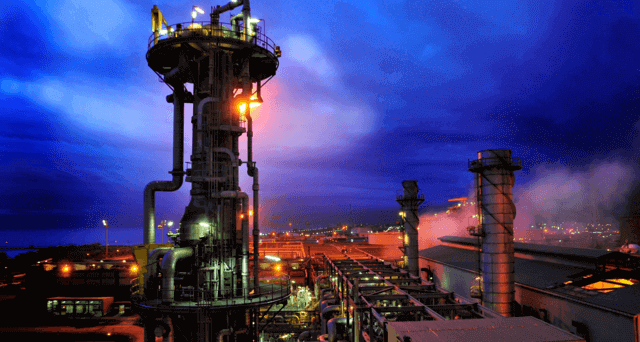
Nigeria LNG Limited (NLNG) and Seplat entered a gas supply deal on May 7. The agreement aims to boost NLNG’s feedstock by over 12%. The NLNG-Seplat gas deal comes as NLNG deals with unprecedented operational challenges due to pipeline vandalism.
NLNG’s gas supply has plunged by 80% due to continuous pipeline vandalism. As a result, only two of its six processing trains are operational.
This has led to a steep fall in LNG exports to NLNG’s Asian and European clients, raising concerns about Nigeria’s ability to meet its LNG export obligations.
Despite all these issues, NLNG is pushing ahead with its Train 7 project. The project aims to boost production capacity from 22 to 30 million tonnes annually.
As of June 2024, Train 7 had reached 67% completion. Nevertheless, for the Train 7 project to succeed, NLNG needs a stable feed gas supply through the GTS-1, GTS-2, and GTS-4 pipelines, the largest lines supplying gas to NLNG.
However, the constant vandalism of these pipelines means that NLNG receives limited feed gas from its JV suppliers (Shell, TotalEnergies and ENI).
Key Details of the NLNG-Seplat Gas Deal
The gas deal involves both NLNG and Seplat Energy. Nigeria LNG (NLNG) is the country’s largest LNG exporter. NNPC, the national oil company, holds 49%, while Shell owns 25.6%. TotalEnergies and ENI hold 15% and 10.4%, respectively. The supplier, Seplat Energy, Plc, is a leading Indigenous independent energy company.
Regarding gas supply volume, Seplat will supply over 150,000 metric tons of gas per month to NLNG’s Bonny plant. The gas will serve as a feedstock for NLNG to process into liquefied petroleum gas (LPG) for the domestic market and liquefied natural gas (LNG) for exports to clients in Asia and Europe.
On the supply start date, Seplat will commence gas deliveries in Q3-2025, pending the completion of all required commercial and technical details.
The exact duration of the NLNG-Seplat gas supply deal has not been publicly disclosed. However, the gas deal is a bridge agreement to plug the immediate feed gas supply gaps.
Regarding gas delivery, Seplat will supply gas through a new pipeline connecting Seplat’s ANOH gas plant to NLNG’s Bonny plant.
Strategic Objectives
The NLNG-Seplat gas supply deal will benefit both parties involved in the agreement.
For NLNG, gas supplies from Seplat will enable it to bridge its feedgas shortfalls caused by pipeline vandalism, crude theft, and low production outputs from suppliers (Shell, TotalEnergies, ENI, and Aradel).
By bridging the feed gas supply gap, NLNG’s six trains will operate at full capacity. This will enable the company to meet its export volume obligations to clients, enhancing its export reputation.
The gas deal also benefits Seplat Energy, enabling it to monetize its gas from the Assa North-Ohaji South (ANOH) gas processing plant. Consequently, gas supplies to NLNG would boost Seplat’s revenues which will enhance the company’s strategic profile in Nigeria’s gas sector and improve its investor perception.
| Benefit Type | NLNG | Seplat |
| Revenue Generation | Stable LNG exports to clients in Asia and Europe | Monetized its gas output processed at ANOH plant |
| Diversification | Less reliance on JV suppliers (TotalEnergies, Shell, ENI, and Aradel) | Less reliance on local gas demand & sales |
| Strategic Leverage | Greater control over feedstock | Access to LNG export value chain |
| National Policy Alignment | Supports “Decade of Gas” initiative | Supports ANOH gas investment case |
The NLNG-Seplat also benefits the federal government. The gas deal aligns with the government’s “Decade of Gas” initiative, established in 2021. The initiative aims to transform Nigeria from an oil-dependent to a gas-powered economy.
The core objects include boosting gas and LNG exports and expanding gas pipelines, processing plants, and storage. It also involves increasing the use of gas for electricity generation to power industries, manufacturing zones, and economic corridors.
Gas
Kwale Gas Gathering to Double its Gas Processing Capacity

The Kwale Gas Gathering (KGG) plant plans to undergo expansion to reach 600 million standard cubic feet daily. KGG facility was designed to process stranded gas resources in OML56.
Gas
Natural Gas Prices May 27, 2025: US, UK & Europe

Gas prices surged in the US and the UK, but held steady in Continental Europe on May 27, 2025, amid growing concerns over supply disruptions.
Prices remain after unplanned capacity cuts were announced at Norway’s massive Troll gas field due to external power issues, compounding ongoing maintenance at other key sites like Nyhamna and Aasta Hansteen.
Norway is under pressure to maintain stable flows as Europe scrambles to refill gas storage, currently at just 45%.
The US natural gas price closed at roughly $3.753/MMBtu on May 27, compared with 3.667/MMBtu recorded on May 27.
UK natural gas futures topped to 88.46 pence per therm up from 87.15 recorded on May 26.
European natural gas futures topped €37.00/MWh on May 27, down from €37.25/MWh recorded on May 26.
Read: Natural Gas Prices May 26, 2025: US, UK & Europe
Major Natural Gas Price Benchmarks
Region | Benchmark | Key Features |
United States | Henry Hub (NYMEX) | Reflects supply/demand in North America Tied to US shale gas production & pipeline infrastructure dynamics |
Europe | TTF (Netherlands) | Europe's leading gas benchmark Reflects LNG and pipeline flows from Russia, Norway, and LNG imports |
Asia | JKM (Japan-Korea LNG) | Reflects Asian demand, LNG deliveries to Japan & South Korea |
United Kingdom | NBP (National Balance Point) | Linked to European gas markets Influenced by LNG & North Sea supply Futures |
Other benchmarks include
- Oil-Linked Pricing: Some long-term contracts ( Russia’s Gazprom pipeline gas exports) still use oil-indexed pricing. Gazprom has long preferred long-term contracts and hybrid pricing with spot elements to hedge against price volatility.
- AECO Canada: It is Canada’s benchmark linked to Western Canada’s pipeline gas supply
Key Factors Influencing Natural Gas Prices
Several supply and demand factors influence natural gas prices. Below is a detailed breakdown of key aspects affecting natural gas prices:
Supply Factors
- Production Levels: Qatar, Russia, and US shale gas production heavily influence global supply. Thanks to fracking technology, the US is already the world’s top natural gas producer. Thus, higher gas production by these countries can push prices down due to oversupply.
- Storage Inventories: Natural gas is stored in underground facilities. Thus, high storage levels generally lead to lower prices. At the same time, low storage levels signal scarcity, leading to price surges.
- Imports/Exports: Fluctuations in gas exports via pipelines or LNG from key producers can significantly affect regional prices. For instance, European gas prices soared by 30% in September 2022 following the indefinite shutdown of Russia’s Nord Stream 1 pipeline. The pipeline, which runs under the Baltic Sea to Germany, historically supplied between 50 – 55 BCM/year of gas to Europe. Likewise, rising liquefied natural gas (LNG) exports by Qatar, Australia, and the US can lead to oversupply and lower prices.
Demand
- Electricity Sector Competition: Countries rely on various sources for power generation, including natural gas, nuclear power, coal, and renewable energy like wind and solar. Suppose the prices of coal and renewables increase. In such developments, electricity producers will shift to natural gas. Conversely, if coal or renewable sources become cheaper, demand for gas will fall, resulting in lower gas prices.
- Weather conditions: Weather plays a significant role in influencing natural gas prices. During the summer, there is a massive surge in the demand, especially in Europe & North America, for air conditioning systems. The high demand for electricity to cool homes and industrial plants can increase natural gas prices. At the same time, during the cold winter season, there is increased gas demand, especially across Europe, North America, and East Asia, to heat homes and industries. When chilly weather hits—like snowstorms or Arctic blasts—it can freeze up gas wells. That means less output, slower deliveries, and higher prices. Hurricanes often shut down oil and gas operations temporarily, pushing prices higher.
- Economic Growth: Strong global economic growth, especially in the US, China, Japan, South Korea, and the EU, boosts industrial demand for natural gas. The manufacturing sector (chemicals, automotive, petrochemicals) depends heavily on gas for feedstock and power generation. However, a weak global economic outlook reduces gas demand, and thus, prices drop.
Geopolitics
- Geopolitical tensions, such as the 2023-2025 Middle East Crisis and the 2022-2025 Russia-Ukraine war, negatively impact gas prices. These tensions disrupt pipeline gas or LNG supplies from producing countries (Russia, Qatar, Australia) to Europe, causing price spikes.
- Russia-Ukraine War: Sanctions on Russian gas disrupted gas supplies to Europe, causing price surges.
- Middle East Conflicts: The tensions in the Middle East impact LNG exporters like Qatar. Following the Houthi Rebel attacks on commercial shipping passing along the Red Sea, Qatar has detoured its LNG tankers towards the Cape of Good Hope (Southern Africa), a much longer route to export LNG to its European clients.
Gas
Natural Gas Prices May 26, 2025: US, UK & Europe

Gas prices saw mixed reactions in the US, the UK & Continental Europe on May 26, 2025, amid growing concerns over supply disruptions.
Prices rose in Europe after unplanned capacity cuts were announced at Norway’s massive Troll gas field due to external power issues, compounding ongoing maintenance at other key sites like Nyhamna and Aasta Hansteen.
Equinor extended a partial outage at Troll until May 30 following a compressor failure. The outage, which began after the field’s annual one-day stop-start test on May 21, has affected output by 34.6 million cubic meters per day, leaving Troll’s remaining capacity at 90 mcm/d.
Norway is under pressure to maintain stable flows as the continent scrambles to refill gas storage, currently at just 45%. Geopolitical tensions also weigh on sentiment, particularly as hopes for a Ukraine peace deal continue to fade.
The US natural gas price closed at roughly $3.66/MMBtu on May 26, compared with 3.75/MMBtu recorded on May 25.
UK natural gas futures held steady at 87.15 pence per therm.
European natural gas futures topped €37.25/MWh on May 26, up from €36.45/MWh recorded on May 23.
Read: Natural Gas Prices May 20, 2025: US, UK & Europe
Major Natural Gas Price Benchmarks
Region | Benchmark | Key Features |
United States | Henry Hub (NYMEX) | Reflects supply/demand in North America Tied to US shale gas production & pipeline infrastructure dynamics |
Europe | TTF (Netherlands) | Europe's leading gas benchmark Reflects LNG and pipeline flows from Russia, Norway, and LNG imports |
Asia | JKM (Japan-Korea LNG) | Reflects Asian demand, LNG deliveries to Japan & South Korea |
United Kingdom | NBP (National Balance Point) | Linked to European gas markets Influenced by LNG & North Sea supply Futures |
Other benchmarks include
- Oil-Linked Pricing: Some long-term contracts ( Russia’s Gazprom pipeline gas exports) still use oil-indexed pricing. Gazprom has long preferred long-term contracts and hybrid pricing with spot elements to hedge against price volatility.
- AECO Canada: It is Canada’s benchmark linked to Western Canada’s pipeline gas supply
Key Factors Influencing Natural Gas Prices
Several supply and demand factors influence natural gas prices. Below is a detailed breakdown of key aspects affecting natural gas prices:
Supply Factors
- Production Levels: Qatar, Russia, and US shale gas production heavily influence global supply. Thanks to fracking technology, the US is already the world’s top natural gas producer. Thus, higher gas production by these countries can push prices down due to oversupply.
- Storage Inventories: Natural gas is stored in underground facilities. Thus, high storage levels generally lead to lower prices. At the same time, low storage levels signal scarcity, leading to price surges.
- Imports/Exports: Fluctuations in gas exports via pipelines or LNG from key producers can significantly affect regional prices. For instance, European gas prices soared by 30% in September 2022 following the indefinite shutdown of Russia’s Nord Stream 1 pipeline. The pipeline, which runs under the Baltic Sea to Germany, historically supplied between 50 – 55 BCM/year of gas to Europe. Likewise, rising liquefied natural gas (LNG) exports by Qatar, Australia, and the US can lead to oversupply and lower prices.
Demand
- Electricity Sector Competition: Countries rely on various sources for power generation, including natural gas, nuclear power, coal, and renewable energy like wind and solar. Suppose the prices of coal and renewables increase. In such developments, electricity producers will shift to natural gas. Conversely, if coal or renewable sources become cheaper, demand for gas will fall, resulting in lower gas prices.
- Weather conditions: Weather plays a significant role in influencing natural gas prices. During the summer, there is a massive surge in the demand, especially in Europe & North America, for air conditioning systems. The high demand for electricity to cool homes and industrial plants can increase natural gas prices. At the same time, during the cold winter season, there is increased gas demand, especially across Europe, North America, and East Asia, to heat homes and industries. When chilly weather hits—like snowstorms or Arctic blasts—it can freeze up gas wells. That means less output, slower deliveries, and higher prices. Hurricanes often shut down oil and gas operations temporarily, pushing prices higher.
- Economic Growth: Strong global economic growth, especially in the US, China, Japan, South Korea, and the EU, boosts industrial demand for natural gas. The manufacturing sector (chemicals, automotive, petrochemicals) depends heavily on gas for feedstock and power generation. However, a weak global economic outlook reduces gas demand, and thus, prices drop.
Geopolitics
- Geopolitical tensions, such as the 2023-2025 Middle East Crisis and the 2022-2025 Russia-Ukraine war, negatively impact gas prices. These tensions disrupt pipeline gas or LNG supplies from producing countries (Russia, Qatar, Australia) to Europe, causing price spikes.
- Russia-Ukraine War: Sanctions on Russian gas disrupted gas supplies to Europe, causing price surges.
- Middle East Conflicts: The tensions in the Middle East impact LNG exporters like Qatar. Following the Houthi Rebel attacks on commercial shipping passing along the Red Sea, Qatar has detoured its LNG tankers towards the Cape of Good Hope (Southern Africa), a much longer route to export LNG to its European clients.
Gas
Shell Nigeria Gas Engages Stakeholders On Deepening Gas Distribution
-

 Business News2 months ago
Business News2 months agoNigeria’s Oil and Gas Reserves 2025 Reach 37 billion barrels & 210.5 TCF
-
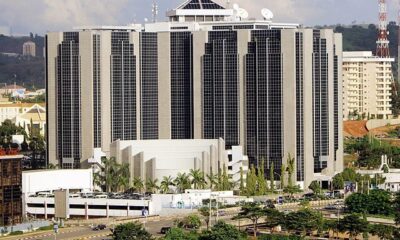
 Business News3 weeks ago
Business News3 weeks agoCBN to Hold Its 300th MPC Meeting on May 20 2025
-
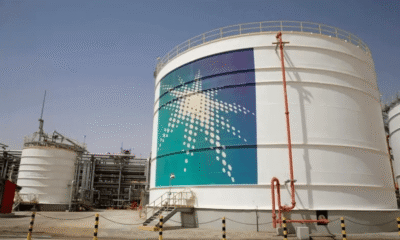
 Oil1 month ago
Oil1 month agoSaudi Aramco Increases June Oil Prices For Asia Amid OPEC+ Supply Hike
-
 Oil1 month ago
Oil1 month agoCrude Oil Prices May 5, 2025: Brent & WTI Rates
-

 Oil3 weeks ago
Oil3 weeks agoCrude Oil Prices May 14, 2025: Brent & WTI Rates
-

 Analysis & Opinions4 weeks ago
Analysis & Opinions4 weeks agoEU Plans to End All Russian Gas Imports by 2027







